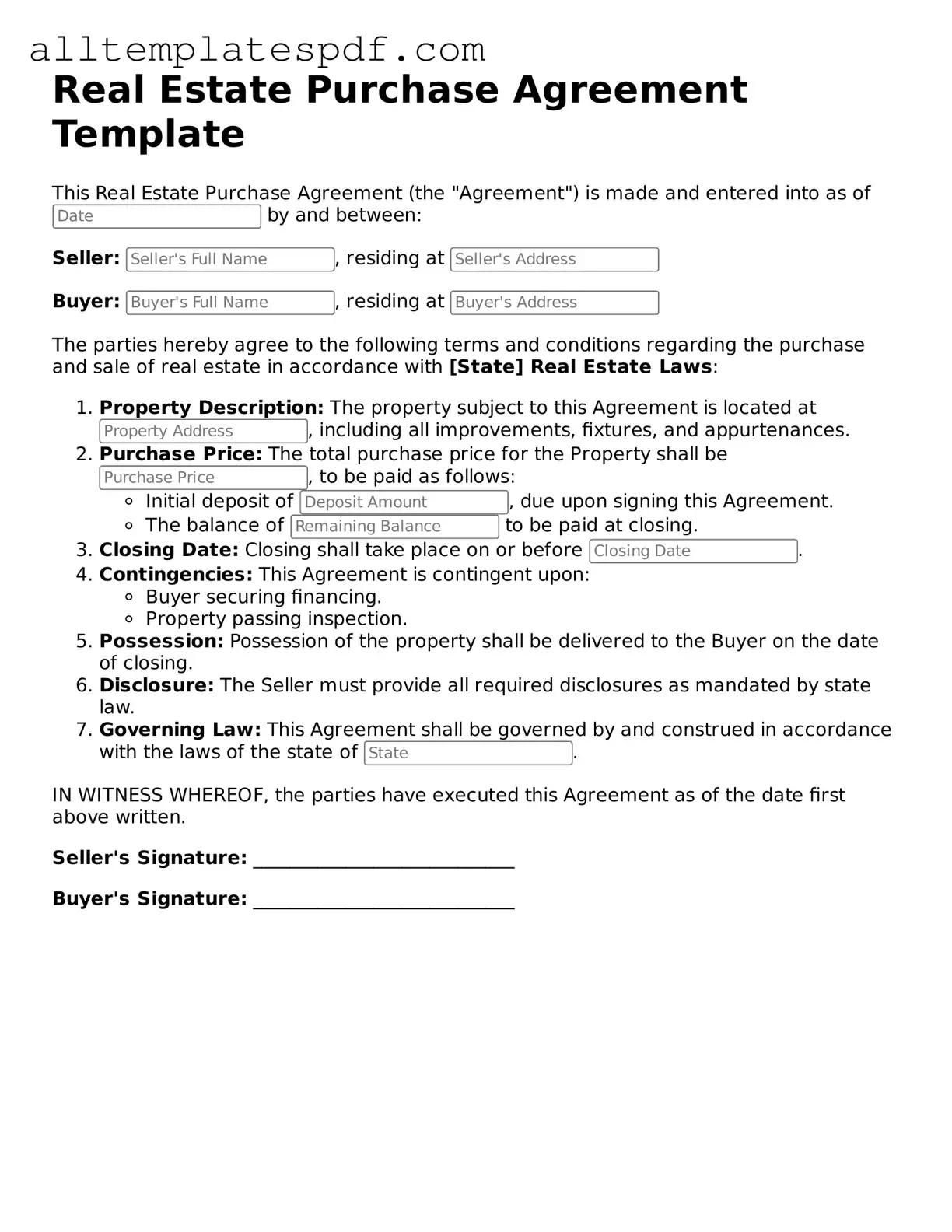When filling out a Real Estate Purchase Agreement form, many individuals inadvertently make mistakes that can lead to significant complications down the line. One common error is failing to provide accurate property descriptions. This includes not specifying the correct address or omitting details about the property boundaries. Such inaccuracies can create confusion and disputes later on, potentially derailing the transaction altogether.
Another frequent mistake involves the buyer's and seller's names. It is crucial to ensure that the names are spelled correctly and match the legal documents. Errors in names can lead to issues with title transfers and may even result in legal challenges. Therefore, double-checking this information is essential.
Inadequate consideration of contingencies is also a mistake many make. Contingencies are conditions that must be met for the agreement to be valid. Failing to include necessary contingencies, such as financing or inspection contingencies, can leave a buyer vulnerable. If unexpected issues arise, the buyer may find themselves without legal recourse.
Additionally, overlooking the purchase price can create problems. It might seem straightforward, but failing to clearly state the agreed-upon price can lead to misunderstandings. Both parties should ensure that the price is prominently displayed and agreed upon to avoid disputes later.
Another area where mistakes often occur is in the timeline for closing. Buyers and sellers should clearly outline the expected timeline for the transaction. If this information is vague or missing, it can lead to delays and frustration for both parties. Setting clear deadlines helps keep the process on track.
Lastly, neglecting to consult with a real estate professional can be a significant oversight. Many individuals assume they can navigate the process on their own, but the nuances of real estate agreements can be complex. Seeking guidance from an experienced agent or attorney can help avoid pitfalls and ensure that all necessary details are addressed properly.
